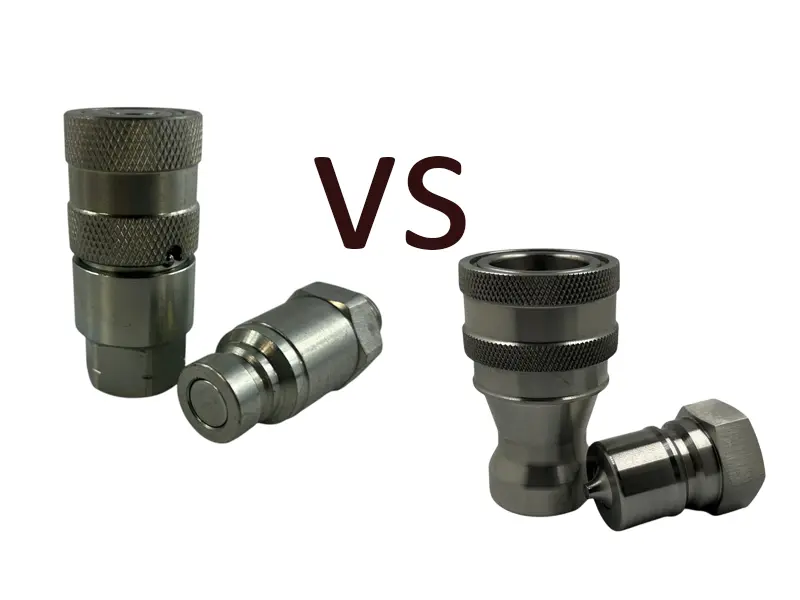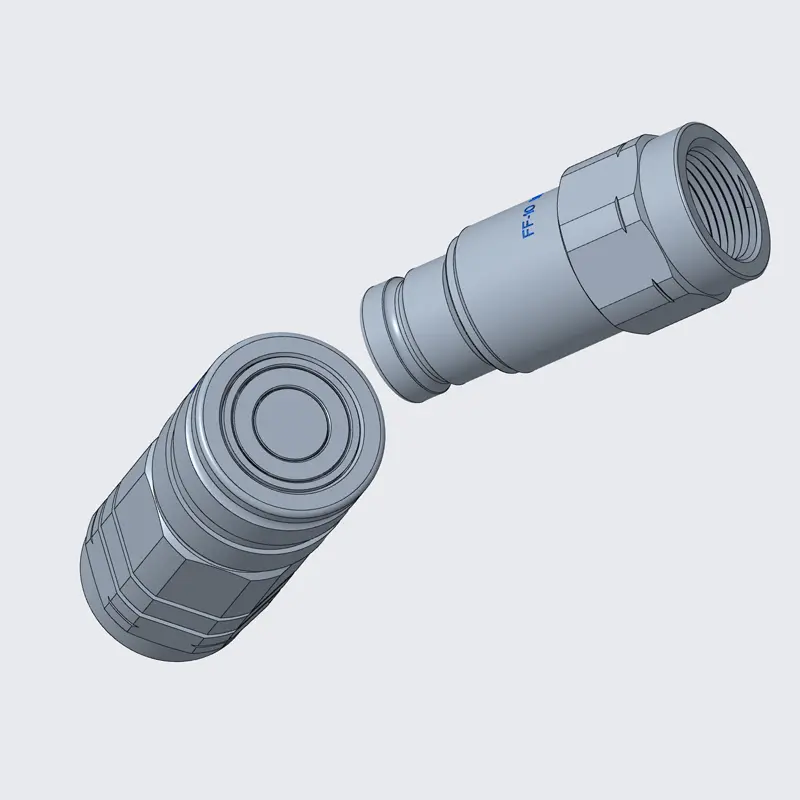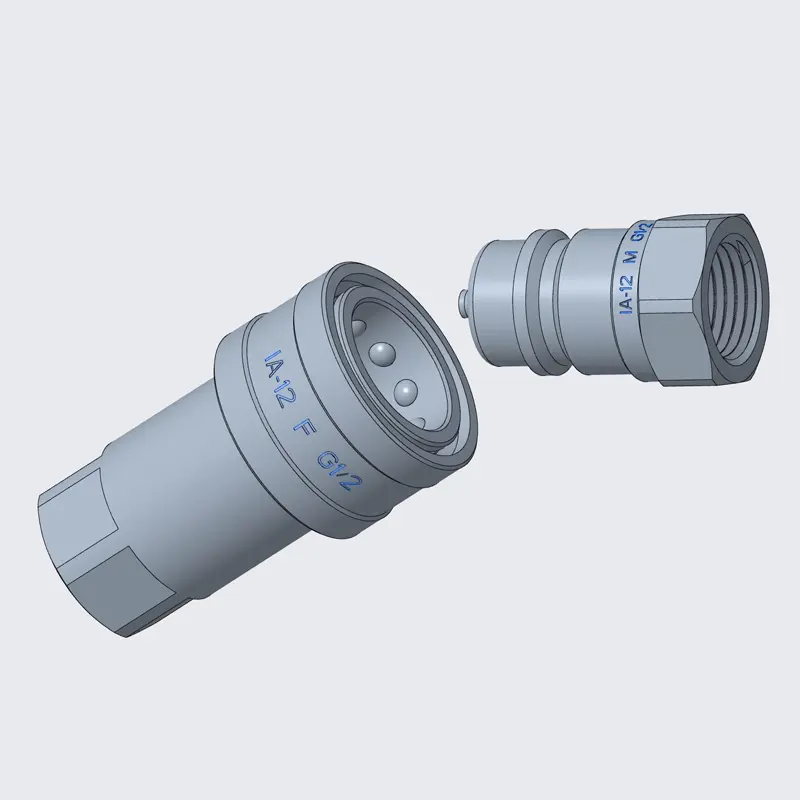When it comes to hydraulic quick couplers, the two most common types are flat face quick couplings and poppet quick couplings. Choosing the right one affects system efficiency, cleanliness, and performance.
In this guide, we compare flat face vs. poppet couplings to help you make an informed decision.

What Are Flat Face Quick Couplings?
Flat face quick couplers are designed with smooth, flush mating surfaces that make them easy to clean and minimize fluid spillage during disconnection.
Key Benefits:
- Flat surfaces for easier cleaning
- Nearly zero fluid loss when disconnecting ( we usually called no-spill couplers)
- Minimal air entry into the hydraulic system
- Ideal for ISO 16028 applications
Common Uses:
- Skid steer loaders
- Excavators
- Agricultural and forestry equipment
- High-pressure hydraulic systems

What Are Poppet Quick Couplings?
Poppet-style quick couplers use spring-loaded internal valves to control fluid flow. They’re a traditional design still widely used in many hydraulic applications.
Key Benefits:
- Robust and versatile design
- Compatible with many older machines
- Good internal sealing with spring-loaded poppets
Drawbacks:
- More fluid leakage during disconnection ( fluid lose during disconnect)
- Harder to clean in dusty or muddy environments
- More air inclusion when connecting
Common Uses:
- Tractors
- Construction equipment
- Portable hydraulic tools

Flat Face vs. Poppet Quick Couplings: Side-by-Side Comparison
| Feature | Flat Face Coupling | Poppet Coupling |
|---|---|---|
| Fluid Spillage | Very low | Moderate |
| Air Inclusion | Minimal | Higher |
| Cleanability | Easy | Difficult |
| Pressure Rating | High | Medium to high |
| Dirt Resistance | Excellent | Lower |
| Compatibility | Modern machines (ISO 16028) | Legacy machines (ISO 5675) |
| Ease of Use | Connects under pressure | Sometimes harder |
Which Hydraulic Quick Coupling Should You Choose?
Here’s a quick guide to help you decide:
Choose flat face quick couplers if you need:
- Leak-free disconnection
- Easy cleaning in dirty environments
- Modern high-performance hydraulic connections
- price is much higher than Poppet Quick Couplers.
Choose poppet quick couplers if you need:
- Compatibility with older equipment
- Cost-effective general-purpose solution
- price lower than Flat face couplers
- easy to change the seal ring on Female coupler
- Save your money on coupler change
Final Thoughts
Both flat face and poppet hydraulic quick couplers have their strengths. Flat face couplings are ideal for cleaner, leak-free performance in demanding environments, while poppet couplings remain reliable and cost-effective for many standard uses.
If you’re unsure which one fits your application, contact our technical team — we’ll help you find the best coupling for your system.